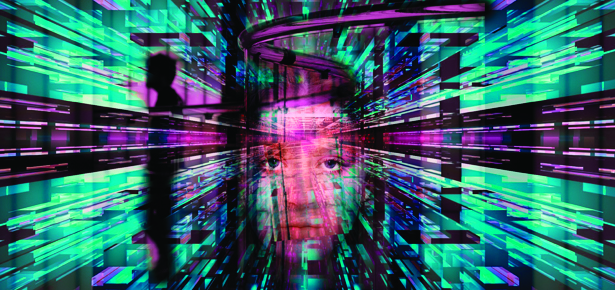
Just yesterday, comparatively speaking in the many millennium of our evolution, we humans did something quite remarkable. We created an entirely new environment for ourselves, one that intersects with but also transcends the physical world as we have known it for all these hundreds of thousands of years.
Starting with William Gibson, who coined the term in his 1984 sci-fi novel Neuromancer, some people have referred to it as “cyberspace.” Yet as I wrote my recent book Psychology of the Digital Age: Humans Become Electric, I grappled with the same problem as I did during the past twentysomething years of my research:
Some people see it as old-fashioned. Currently “social media” is much more popular, but not all online environments are social, even very psychologically complex ones as in virtual realities. And although “social media” is the trendy substitute for the more technically accurate “social network,” the internet has been social ever since the very first email or discussion board post. Especially in this rapidly paced age of digital technologies, we invent terms just to make something feel special and new. Rather than “cyberspace” we could rely on other traditional terms that are still hanging on, like “internet” and “web.” ¬A problem is that you don’t necessary have to be connected to the internet or web to be in cyberspace. A local network or stand-alone computer is enough. I use all of these terms in my articles and books, but I still like the supposedly old-fashioned term “cyberspace.” Here’s why.
Cyberspace is psychological space. That deceptively simple idea has been the cornerstone of all my research. It is an extension of the various theories that describe how an intangible environment or space exists between and among people – call it a transitional, transformative, intersubjective, or interpersonal space, as various theorists have. It is a space that is part self and part other, a space where minds interact with each other. Given that “cyber” refers to computers and their networks, cyberspace is the psychological space between self and other mediated by computers and their networks, even when the “other” is the “mind” of the computer itself.
What makes cyberspace different than the psychological space created by other technologically-mediated environments like TV, radio, and telephones is the speed at which information is processed. This is what computers are all about. That speed has led to levels and kinds of interactivity that previous forms of communication could not offer. As I describe in my book, that speed enables a prolific capacity to alter, amplify, isolate, and combine in unique ways the Eight Dimensions of Cyberpsychology Architecture –the identity, social, interactive, text, sensory, temporal, reality, and physical dimensions.
Cyberspace is therefore a very unique kind of psychological space, a space “out there” that is an extension and blending of human minds, a space where these minds can experiment with words, images, time, interpersonal connections, self-representation, and influences on the physical body and world never before possible in human history.
The critics of so-called “digital dualism” will probably take issue with my predilection for the concept of cyberspace, claiming that it and the real world are so intertwined that it makes no sense to draw a distinction between the two. I’ll save my reply to that claim for my next blog post.
Latest Comments
Have your say!